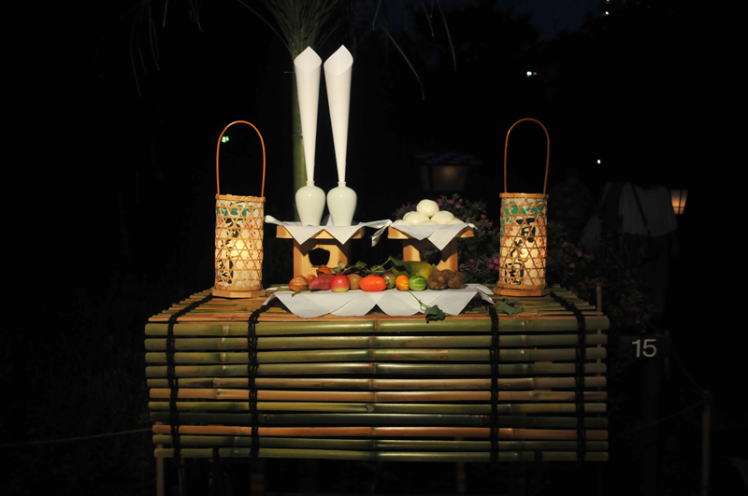
Offerings to the moon
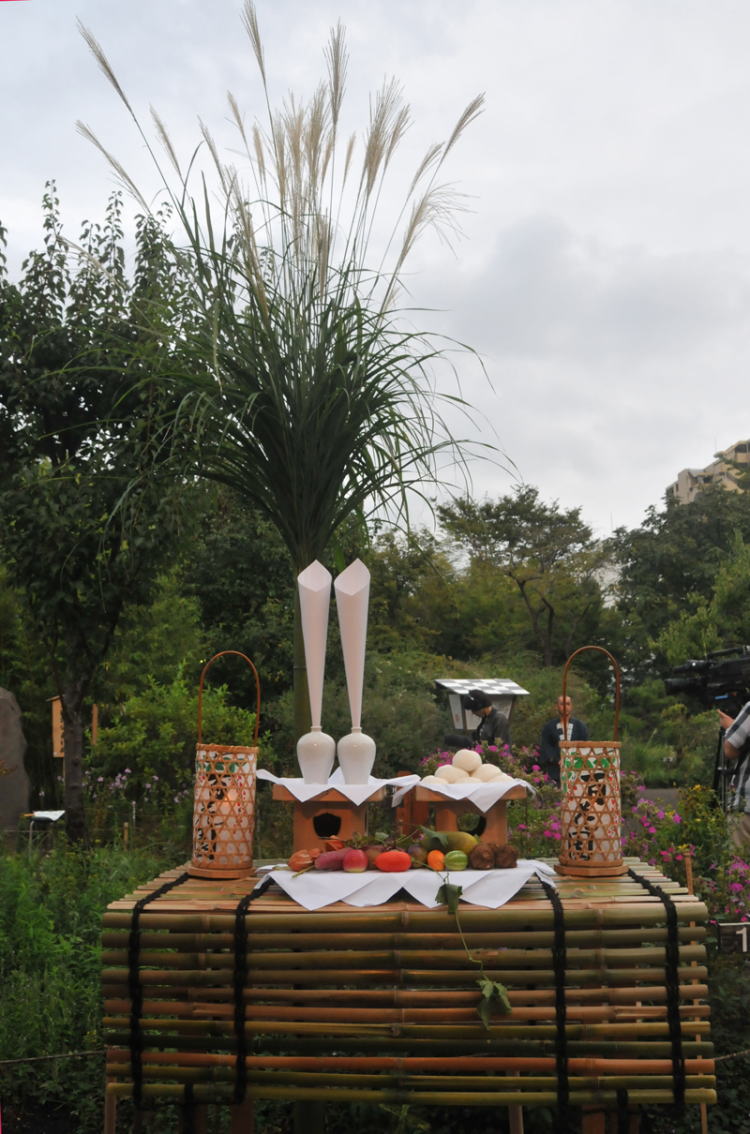
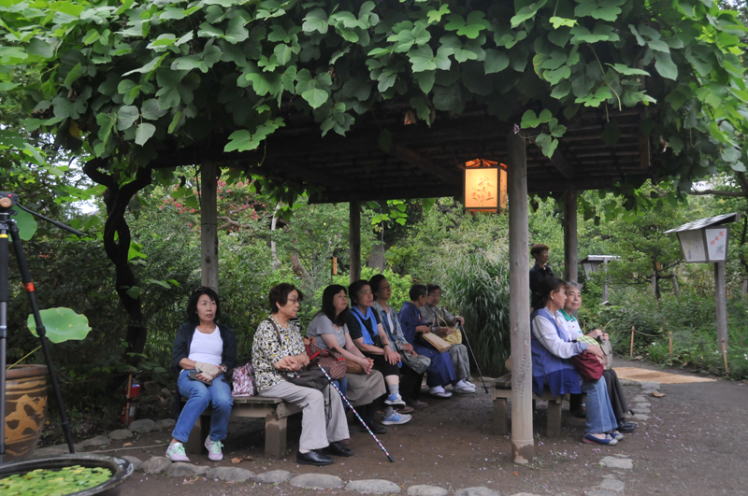
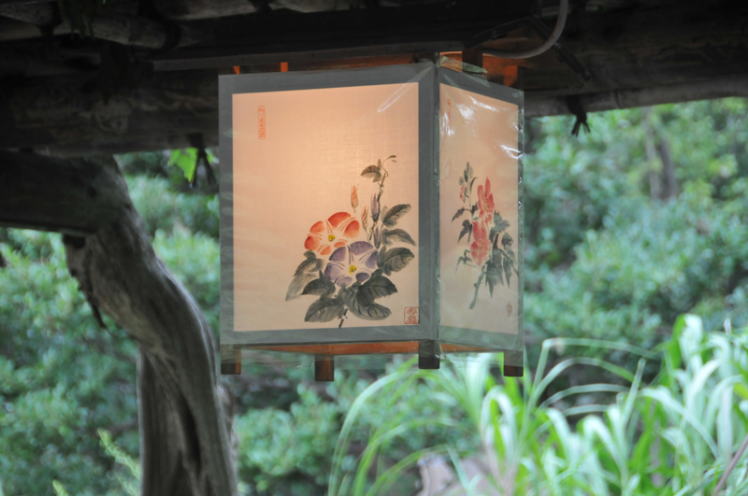
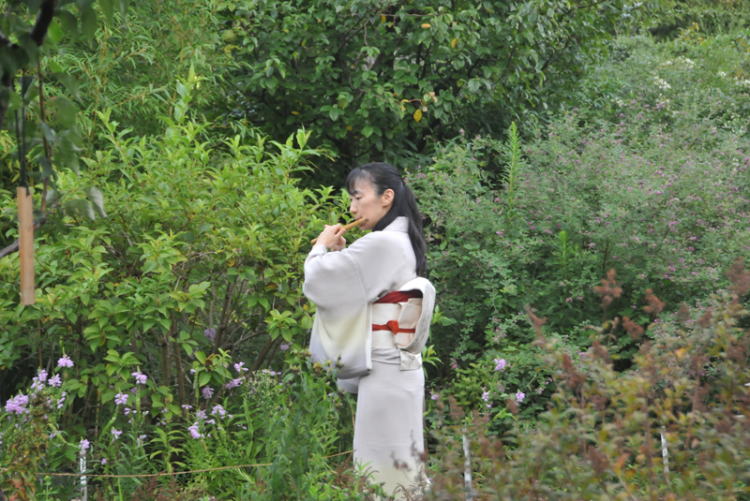
Shinobue flute performance by Mari Sakamoto
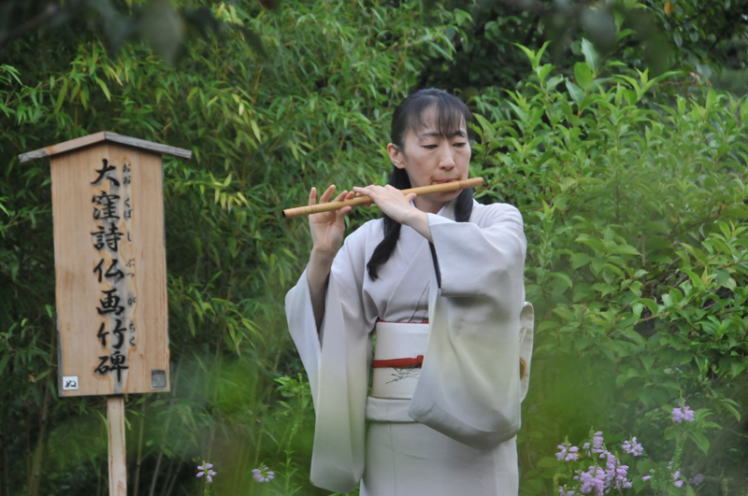
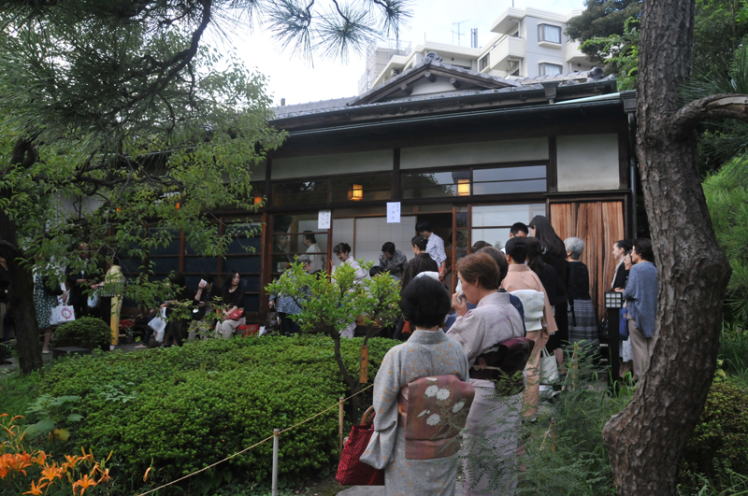
Tea ceremony
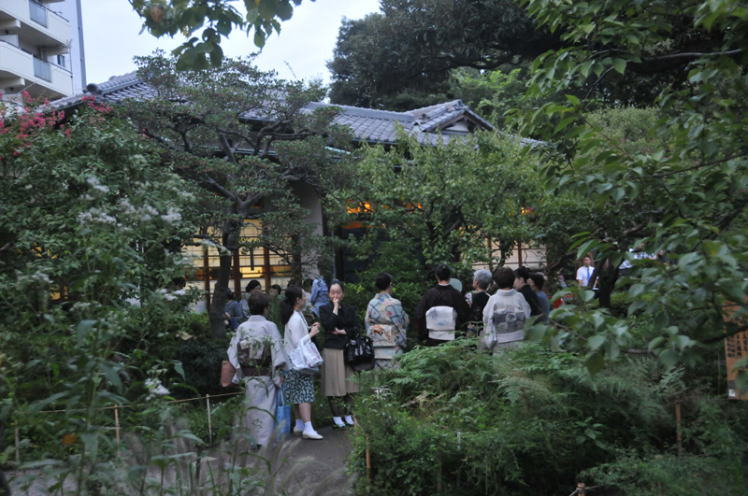
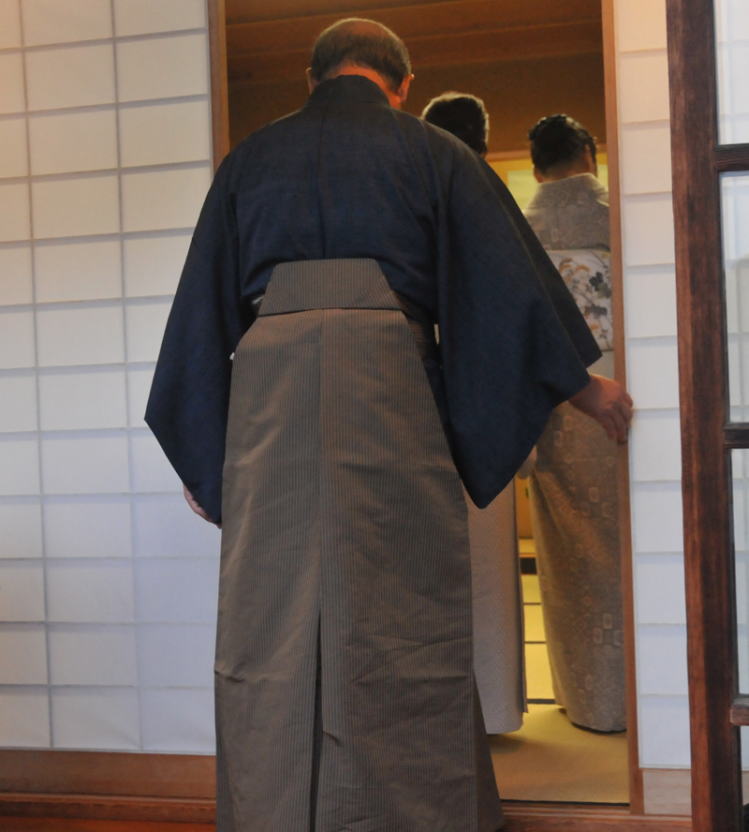
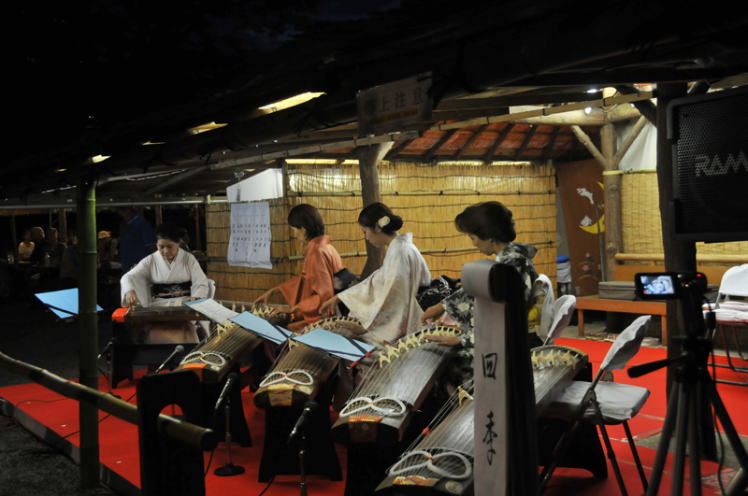
Koto music performance
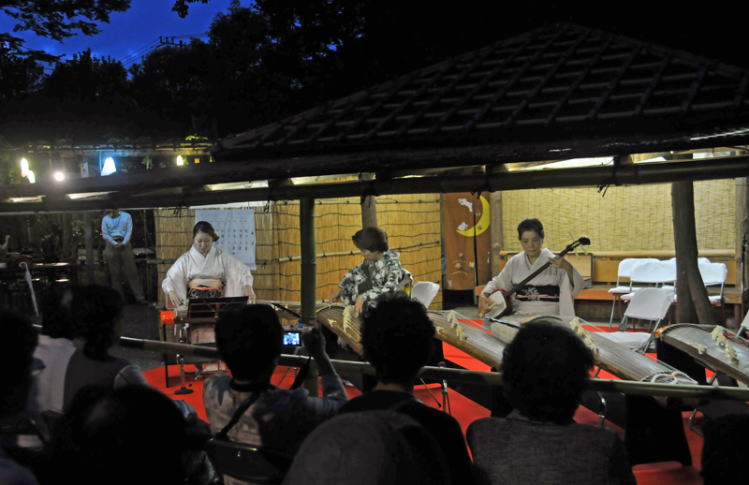
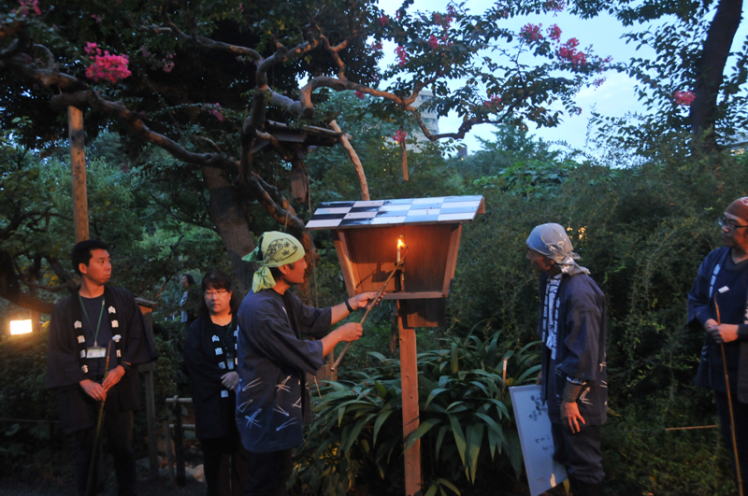
Lighting of "andon" paper-covered lamps (35 in the garden)
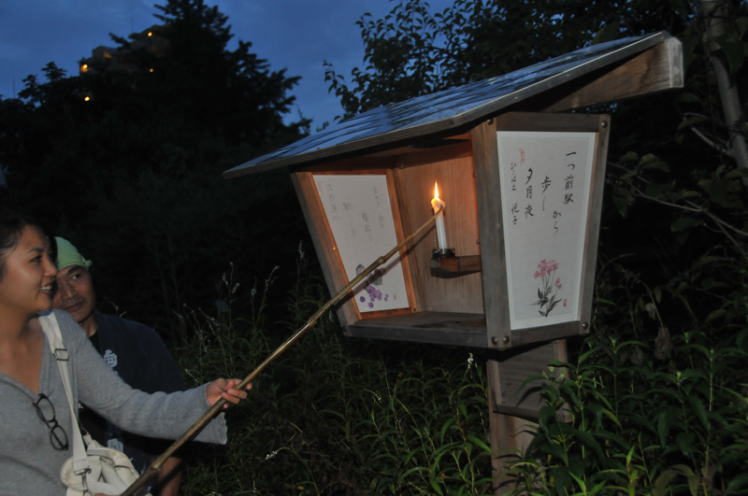
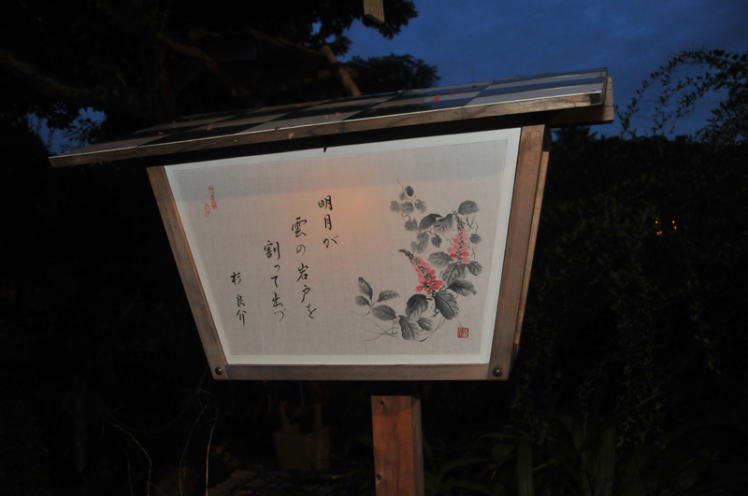
Haiku poems and haiku pictures on "andon" paper-covered lamps.
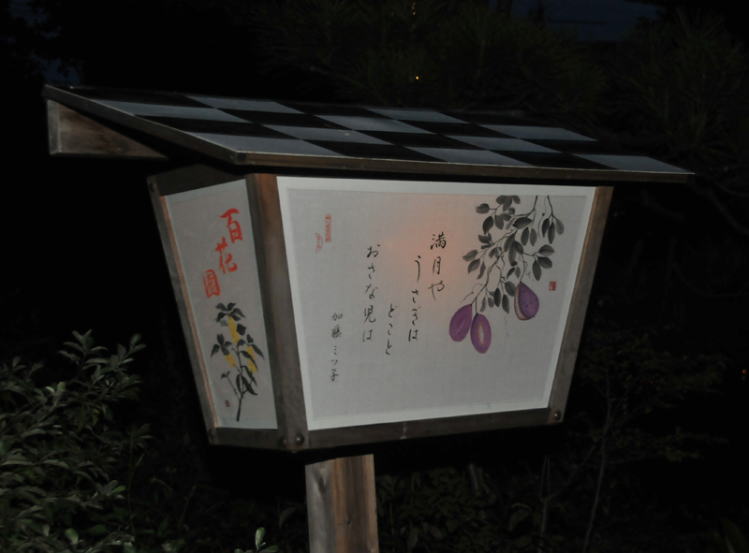
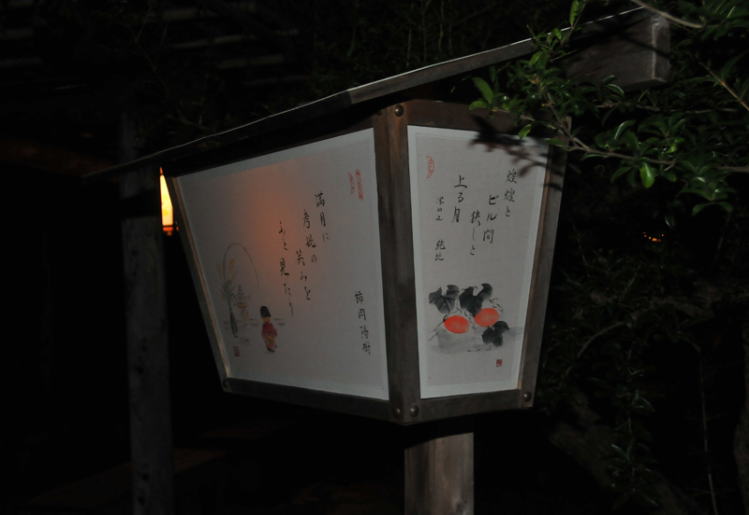
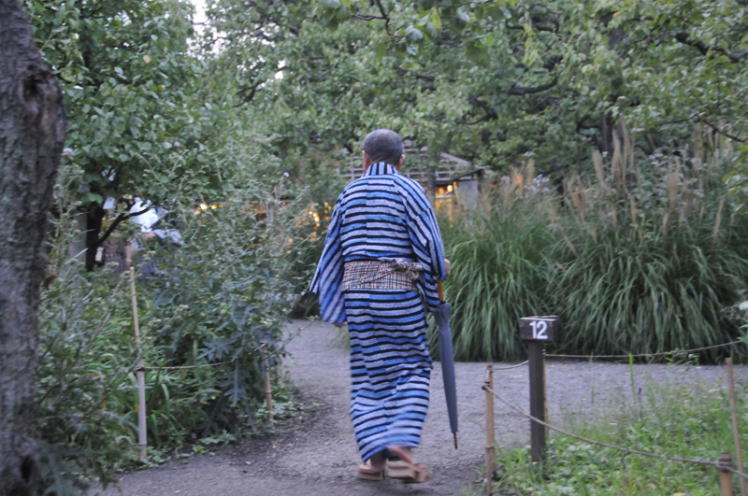
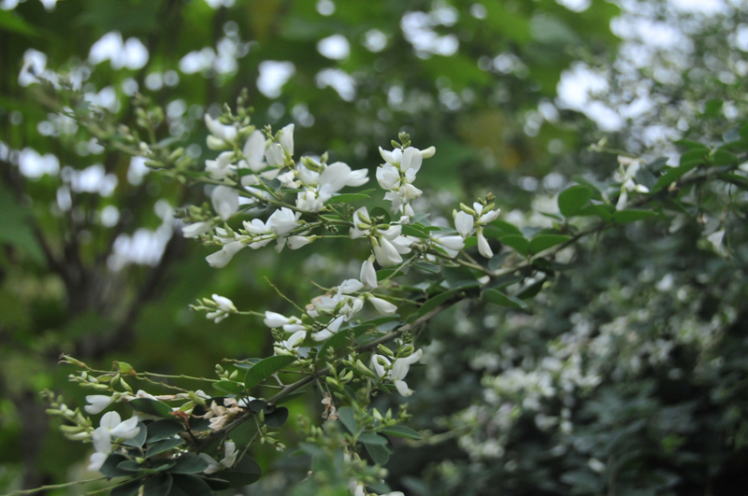
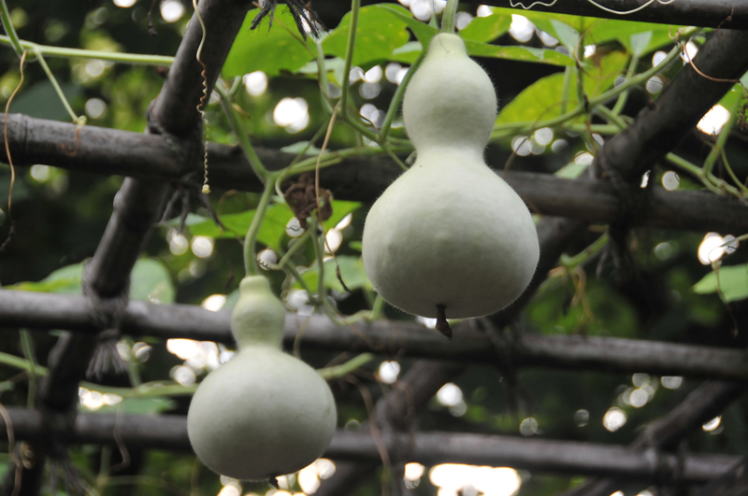
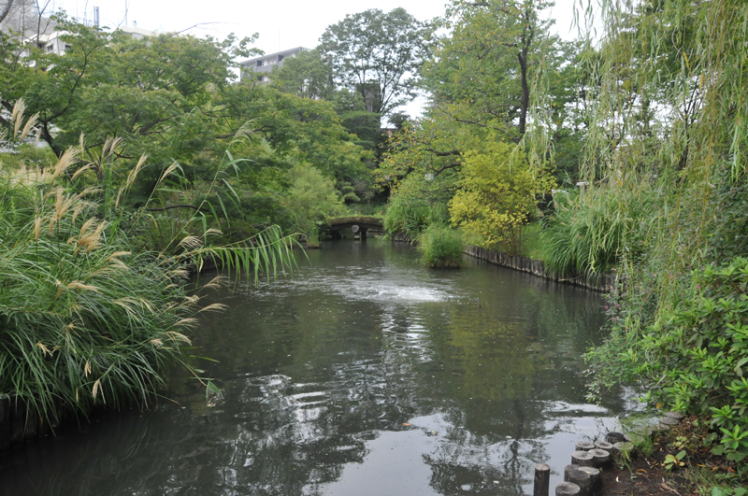
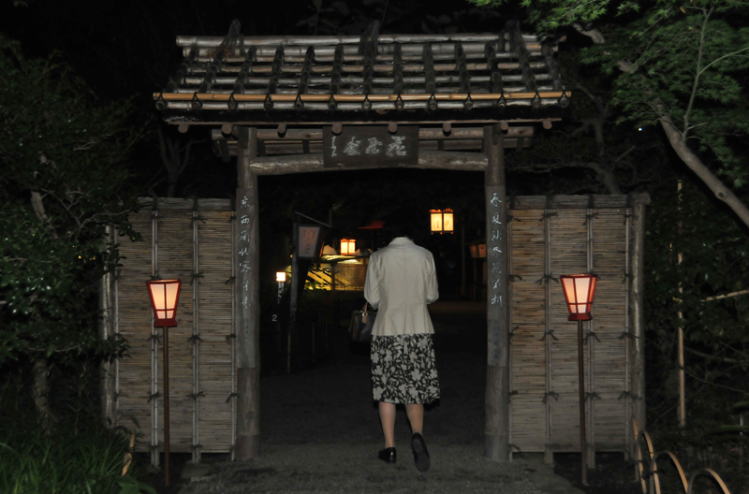
| Return to Top Page Return to September |
MOON VIEWING PARTY AT MUKOJIMA HYAKKAEN GARDEN
(Sept. 12,12 and 14 in 2019)
| Sept. 12,13 and 14 in 2019 (open 9 a.m.-9 p.m. during the moon viewing
event) Mukojima Hyakkaen Garden was built in the early 19th century by a wealthy merchant of Edo, Sahara Kiku-u. Hyakka-en means A Hundred Flowers Garden. The garden covers little more than 2 acres but is intensely planted with trees, deciduous shrubs, flowering bushes and a tunnel of bush clover. Moon Viewing has long been a popular pastime in Japan. Especially on "Jugoya"the night of the full moon of the eighth month which was the 15th night (jugoya) of the month in the old lunar calendar. Today, it is held on Sept. 15 in the solar calendar. The Japanese adopted the Chinese custom of setting out melons, green soybeans, and fruits in the garden as offerings to the moon on this day. Jugoya is considered to be the harvest moon and is an occasion for thanks giving and partying. Sprays of susuki (eulalia) are displayed on the veranda and tiny skewered dumplings (dango) and vegetables are offered to the moon. Moon viewing is a common theme in Japanese poetry, particularly in waka and haiku. It ranks with snow viewing and hanami as the three most favored settings for declaration of love and poetic outpourings of the soul. (from Kodansha International Japan Encyclopedia) Shinobue flute performance on Sept. 12, 5 p.m.-5:30 p.m. Ceremony of Offerings to the moon on Sept. 12 from 5 p.m. Offerings displayed on Sept. 12,13 and 14 Tea Ceremony on Sept. 12,13 and 14 from 3 p.m. Koto Music Performances on Sept. 12,13 and 14 from 6 p.m. URL: Mukojima Hyakkaen Access: Higashi-Mukojima Station on Tobu Isezaki Line from Asakusa. 10 minutes walk. or Hikifune Station on Keisei Line Closed on Mon. Admission: 150 yen. Telephone: 03-3611-8705 |

Offerings to the moon




Shinobue flute performance by Mari Sakamoto


Tea ceremony



Koto music performance


Lighting of "andon" paper-covered lamps (35 in the garden)


Haiku poems and haiku pictures on "andon" paper-covered lamps.






